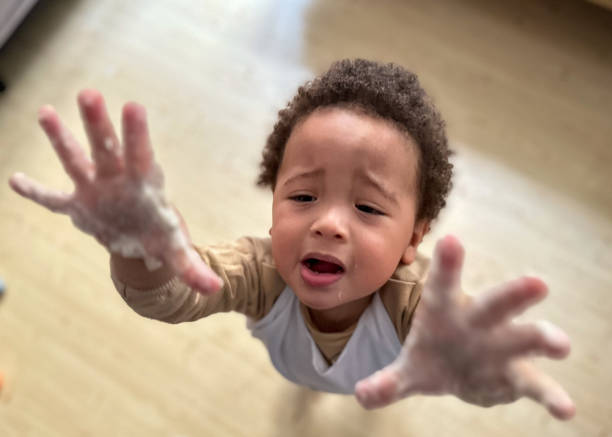Introduction
One minute your baby is content, the next they’re holding on to you for dear life. If you’re raising a clingy baby, you’re not alone. This is a completely normal phase in many infants’ development, but it can sometimes be exhausting and overwhelming for parents.
In this post, we’ll explore why babies become clingy, when it typically happens, and most importantly 6 helpful, gentle tips to manage a clingy baby without compromising their sense of security.
Whether you’re a first-time parent or a seasoned mom in need of fresh ideas, these strategies will help you support your little one while reclaiming a bit of personal space.
What Causes Baby Clinginess?
Clinginess in babies can be attributed to several natural and developmental factors, including:
- Separation anxiety: Typically starts around 6-8 months and peaks at 14-18 months.
- Developmental milestones: New skills like crawling and walking can make babies crave reassurance.
- Illness or teething: Physical discomfort often increases a baby’s need for comfort.
- Environmental changes: Moving homes, starting daycare, or changes in routine can unsettle a baby.
- Temperament: Some babies are naturally more sensitive and need extra emotional support.
Understanding the root cause helps you respond with patience and empathy, rather than frustration.
6 Helpful Tips To Deal With A Clingy Baby
1 Validate Their Feelings
Your baby’s clinginess isn’t manipulation it’s communication. They’re expressing a need for security, comfort, or connection. Instead of dismissing it, acknowledge their feelings:
“I see you’re feeling a little unsure right now. It’s okay, I’m here.”
Physical touch, eye contact, and soothing words can make them feel seen and safe.
2 Practice Gradual Separation
If your baby panics every time you step away, practice short, safe separations to build their confidence. Try leaving the room for a minute, then returning with a warm smile. Slowly increase the duration as they get more comfortable.
This teaches them that you’ll always come back an essential lesson for developing trust.
3 Establish Predictable Routines
Babies thrive on structure. Having consistent routines for feeding, napping, and playtimes provides a sense of safety and predictability. When life feels reliable, babies feel more secure, reducing anxiety-driven clinginess.
A simple routine could look like:
- Morning cuddle and playtime
- Breakfast
- Nap
- Outdoor stroll
- Afternoon play
- Bedtime routine with a story and lullaby
4 Encourage Independent Play
While you can’t expect a baby to entertain themselves for hours, you can gently encourage solo play in safe, supervised spaces.
Start with just a few minutes a day where you’re nearby but not directly interacting. Offer engaging toys, stacking cups, soft books, or sensory balls. Slowly increase their solo playtime.
This fosters their independence while reassuring them of your presence.
5 Offer Comfort Objects
Transitional objects like soft blankets, plush toys, or a parent-scented t-shirt can ease separation anxiety. These familiar items provide comfort when you’re not immediately available.
Introduce a special stuffed animal during cuddles and naps so it becomes a source of security.
6 Prioritize Quality One-on-One Time
Sometimes, clinginess stems from unmet connection needs. Filling your baby’s emotional tank with focused, loving attention can reduce their neediness throughout the day.
Set aside 10-15 minutes a few times a day for uninterrupted play, baby massage, singing, or reading. Put away your phone and be fully present.
When your baby feels genuinely connected, they’re more likely to explore independently later.
When Should You Worry About Clinginess?
While clinginess is normal, consult your pediatrician if:
- Your baby seems inconsolable for most of the day
- They stop eating or sleeping properly
- There’s no interest in toys or interaction
- They regress in other developmental milestones
These may indicate a medical or developmental concern needing attention.
Final Thoughts
Dealing with a clingy baby can be draining, but it’s also a precious sign of your baby’s attachment to you. By using these gentle, practical strategies, you’re not only managing clinginess you’re nurturing trust, emotional security, and independence.
Remember: this phase won’t last forever. The cuddles, those tiny arms around your neck, and their constant need for you are fleeting moments you’ll one day miss.
